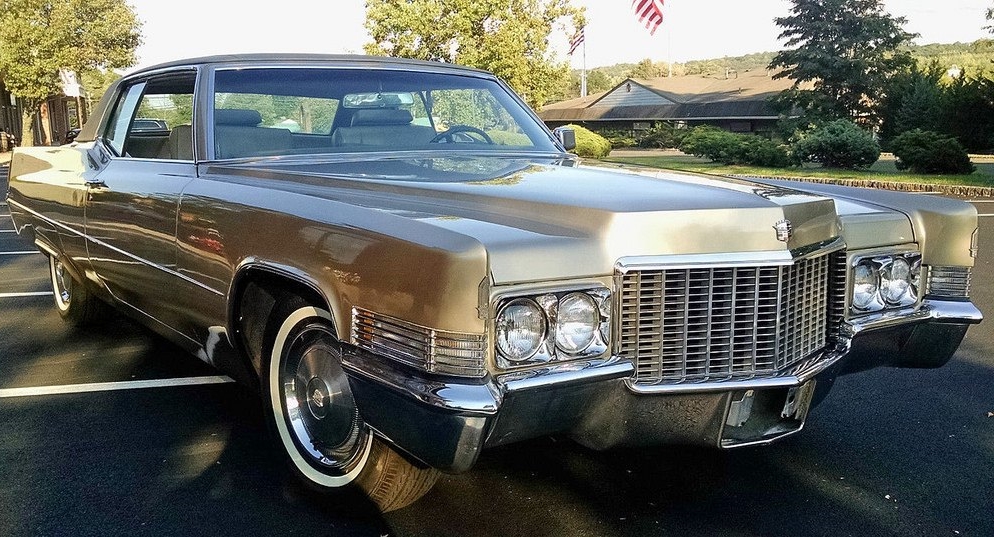
In 1970, Cadillac first offered a power sunroof on selected models. Up until that time, sunroofs on American cars had been rather limited. It was available on the Thunderbird in 1960, and I imagine there were other instances, but by and large it was not common.
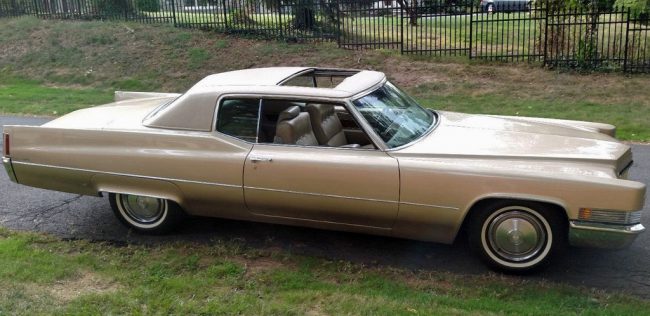
Today, sunroofs are no big deal. Heck, you can get them on just about any 2018-19 model, from a Civic to a Rolls. But back in the early ’70s, they tended to be limited to premium European cars. Mercedes-Benz, BMW, Jaguar and the like.
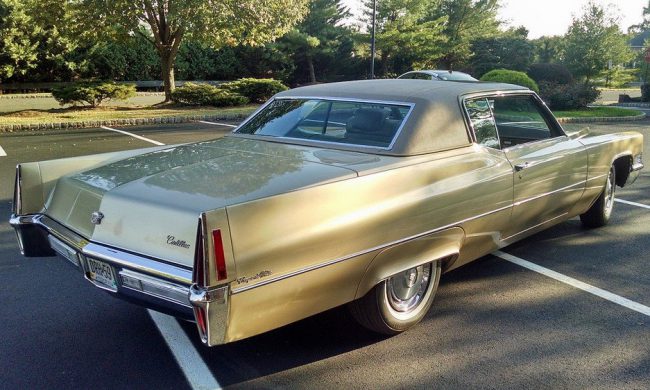
But in 1970 Cadillac offered a power sunroof. Actually, a few 1969 Eldorados were produced with them, initially. But for model year ’70, they were officially catalogued, and a nifty little brochure promoting the option was handed out to showroom browsers.
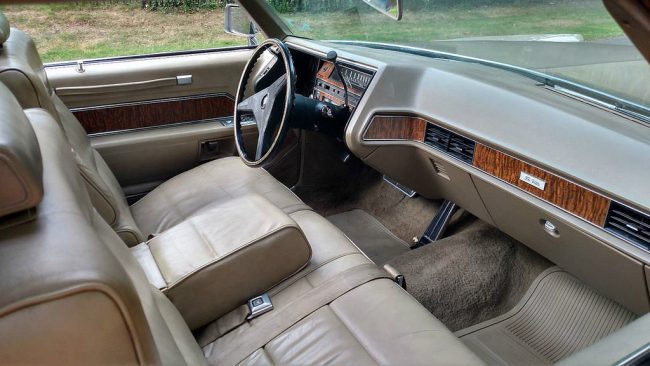
1970 was a great year for Cadillac. 238,745 Cadillacs were built for the model year, setting a division record. And why not? They were attractive, comfortable, powerful. And the Cadillac name still had plenty of cachet.
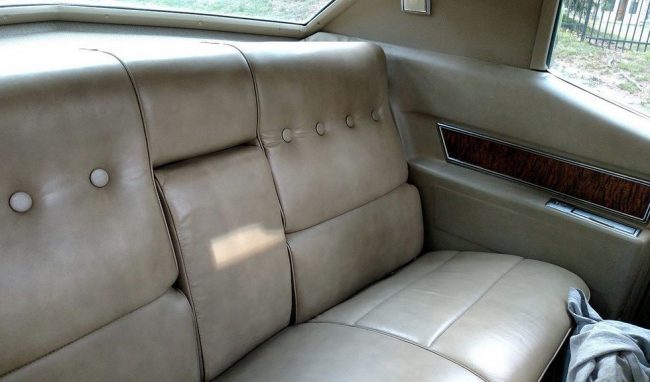
The Coupe de Ville had a good year in particular, with 76,043 of the $5,884 luxocruisers built. But what’s a Cadillac without options? I imagine many of them went out the door for seven grand plus.
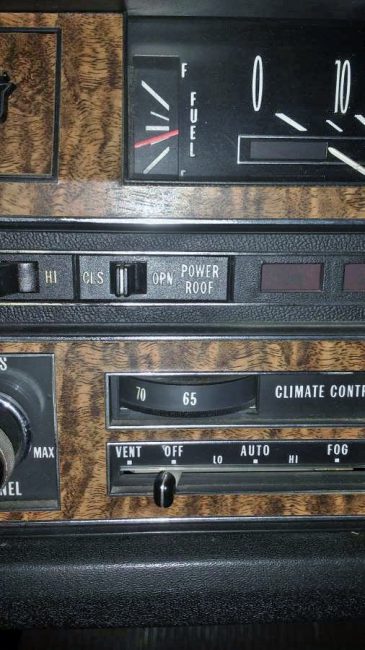
For those who selected the sunroof, a switch was installed to the left of the steering column, just above the climate control. The automatic climate control was another pricey option, at $516, but I imagine many new Cadillacs had them. Other popular options included cruise control ($95), rear window defogger )$26-37, depending on the model), Twilight Sentinel ($37) and leather upholstery ($156-184, again depending on the model).
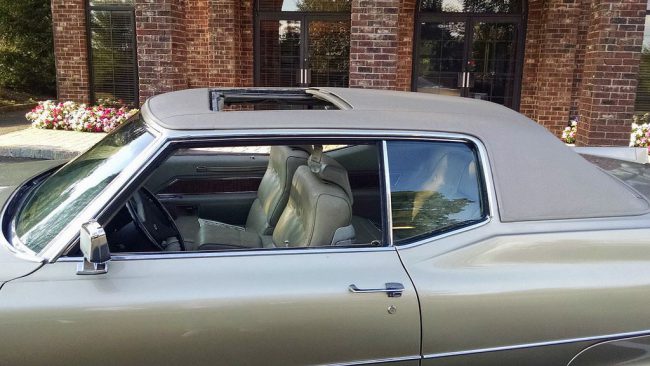
The featured car is painted in Sauterne metallic, paint code #64. I’ve seen many 1970 Cadillacs, in person and online, and had never seen this color before. With the matching vinyl roof and leather interior, it’s pretty sharp. There was a veritable cornucopia of color choices. San Mateo Red. Byzantine Gold. Phantom Gray. Nottingham Green Firemist. Cinnamon Firemist. Chateau Mauve Firemist. It was truly a different time!
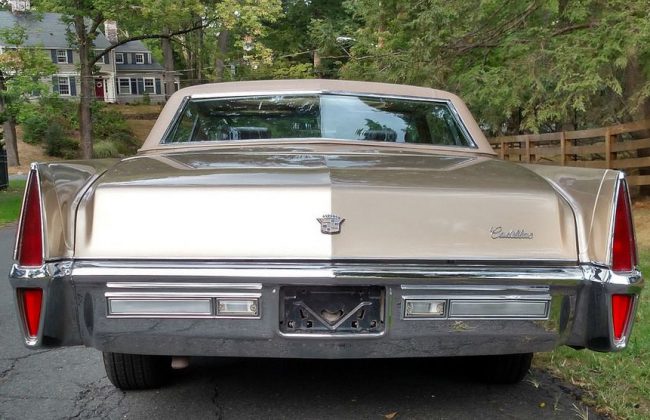
I’ve always loved the styling of the 1970 Cadillacs. True, it was just a mild refreshing of the 1969 model, but I think those minor revisions made it look even better. The bigger taillights (although the lower lens was just a reflector), the new grille, the wheel covers, etcetera. Just pleasing lines and details.
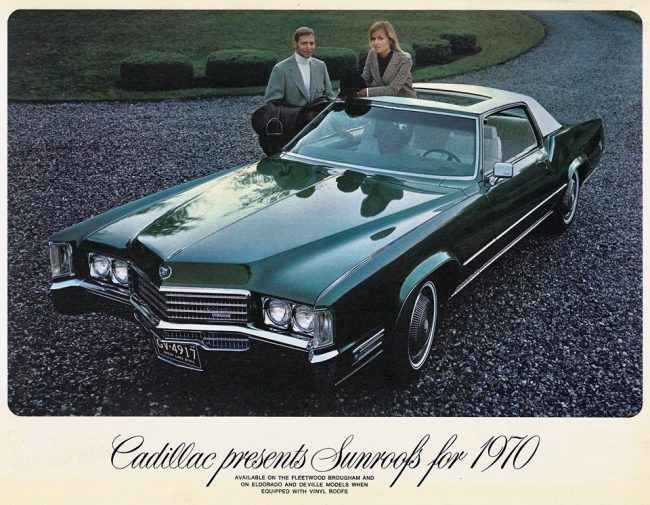
The sunroof was a $626 option, considerable when the least expensive Cadillac was the Calais two-door hardtop, at $5,637. Although you couldn’t get a Calais with the sunroof, as the Calais could not be equipped with a factory vinyl top.
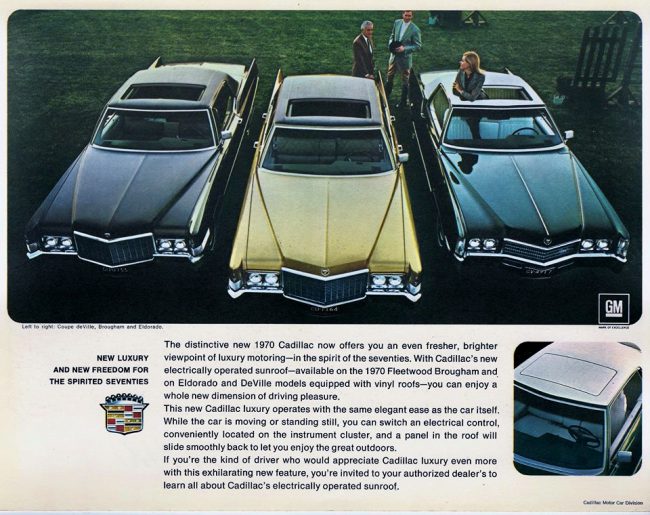
Availability was limited to the Fleetwood Eldorado, De Ville series (as long as they had the required vinyl roof), and Fleetwood Brougham. Although not strictly required for the sunroof option, the Six-Way power seat was recommended by Cadillac.

And each 1970 Cadillac was powered by the, ahem, powerful 472 CID V8, with 375 hp at 4400 rpm. Eldorados got even more oomph with a 500 CID eight with 400 hp. They might have been big, plush luxury cars, but they could giddy up with the best of them!
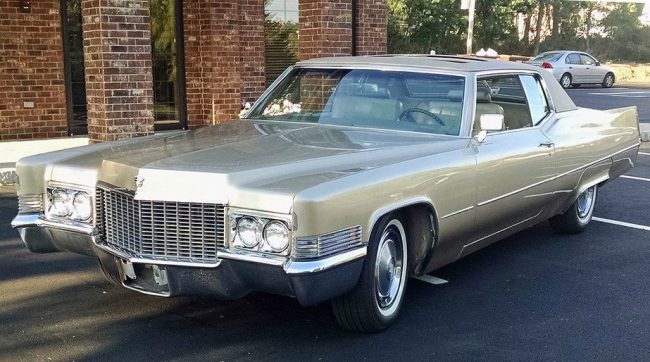
Note: Special thanks to Dave Smith for providing the pictures. Last week I ran across two of the photos in this article, and posted them on my page. Turns out Dave saved the auction pics from 2015 and I was able to see even more of this most excellent Cadillac. At which point, I knew I would have to write it up!







12 Comments
All the little features, the SR, the climate control, the cruise, even the twilight sentinel, just there to take the stress off on a commute. The owner of the Caddy has that stuff and 99 percent of the other cars don’t. The Caddy is just constantly telling it’s owner he made the right choice. Lucky the import guys had the politics of the new generation to fall back on, because if their engineers had to match Cadillac feature for feature, their engineers would be left scratching their head.
Another wonderful article on the 1970 Cadillac, well done Tom.
The relative pricing of automatic climate control and leather surprises me. I feel like I see a fair number of Cadillacs from this era with that temperature control, but cloth interiors are surprisingly common.
Is my impression mistaken? Do you have a guess about the take rate for leather in the 70s?
Leather really was originally reserved for open cars and for the front seat of limousines in the past before everyone just started blindly thinking Leather = Luxury. Leather was for high wear areas, like the front seat of a limo where the driver would be doing a lot of getting in and out of the car where the finest cloth, wood and the like were reserved for the rear seats of the limo where the paying passengers sit.
So yeah, you do see lots of these with cloth and brocade interiors, but since in your mind your already making the connection of Cloth = Cheap but thats not really the truth.
Yeah I wish I could have had a decent cloth interior in my Silverado.
I would love to see a nice real cloth type material make a comeback, its interesting that even the “save the earth” folks don’t really seem to have an objection to sitting on cow flesh in their electric cars.
I hear you, and I’ve read that potted history of cloth v. leather before (including the lovely diversion of high-end Japanese cars like the Crown using wool upholstery).
But on the luxury cars of this era, leather was priced as the upgrade, though not very expensively (I assume some people stuck with cloth as a personal preference). But what would the leather/cloth breakdown be? MB-Tex aside, what’s the fanciest broughamy car that would come with vinyl seats as the base option?
(I reflect on today, where I was going to say that even the cheapest cars now spec cloth seats, but my parents just bought a pretty nice CUV, and it is upholstered with a very nice pseudo-MB-Tex that is neither cloth nor leather, but also isn’t cheap-feeling.)
I hate roof holes. Sunlight comes in from all the wrong angles and sneaks around my Ray-Bans. Makes me wonder if I have the PSE. I love driving open-tops Targas and ‘verts. Not a fan of T-tops outside MR2, but no roof holes.
Great read and research. As an Appraiser this era Cadillac is a Recommended Buy for Gen Xers and Millennial Clients. Thank You Chuck Patton
I’ve seen a few ’70 Caddies over the years, but never one with a factory sunroof. The take rate on that option had to be low, given the price, but this car looks to have all the option boxed ticked off.
Interestingly though, it does not have cruise control, you can see blanked out box in the photo of the sunroof switch, above and to the left, the cruise control on-off controls would be in that woodgrained box with the Cadillac logo, also its missing the optional RH mirror, though that is not very common for late 60’s and early 70’s Cadillacs.
Good write-up.
I don’t get passionate about Cadillacs – I equate them with my mother’s aunt, who married well but late and was childless. Her last Caddy was a 1968, IIRC, with the stacked headlights. Her husband bought his own 1976 coupe, had a wreck on ice, not fast, and was fatally injured.
But, I remember – Popular Science did a Peak New Car section on the 1969s. I was just gelling on tastes and hopes for someday having a nice car myself – not a balky Jeep Wagoneer (that today would sell in five figures, for the condition it fetched one-thousand 1973 greenbacks). The abandonment of the headlight stack, replaced by the bladed front fender…unlike later grilles, I thought the 1969 was PERFECT.
This shows much of it, but – to my eye, already opinioned – it shows the contrived refresh of what IMHO ought to have been left alone.